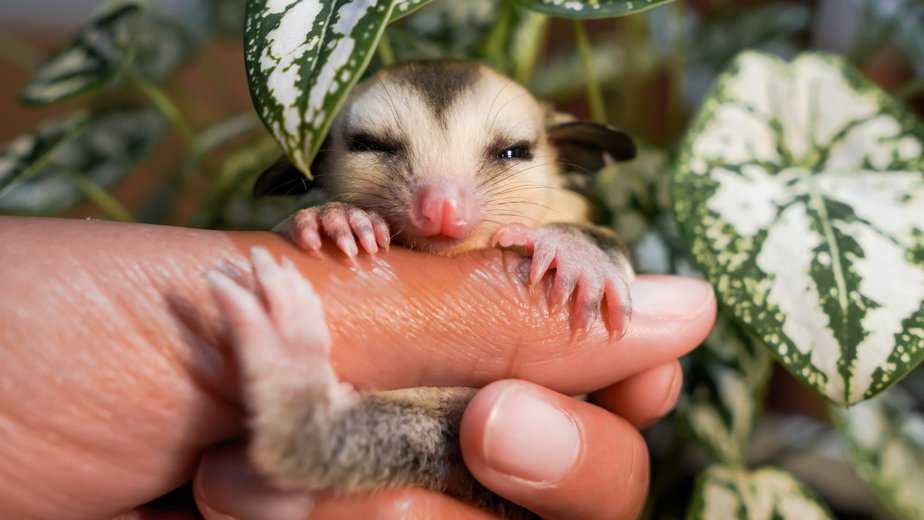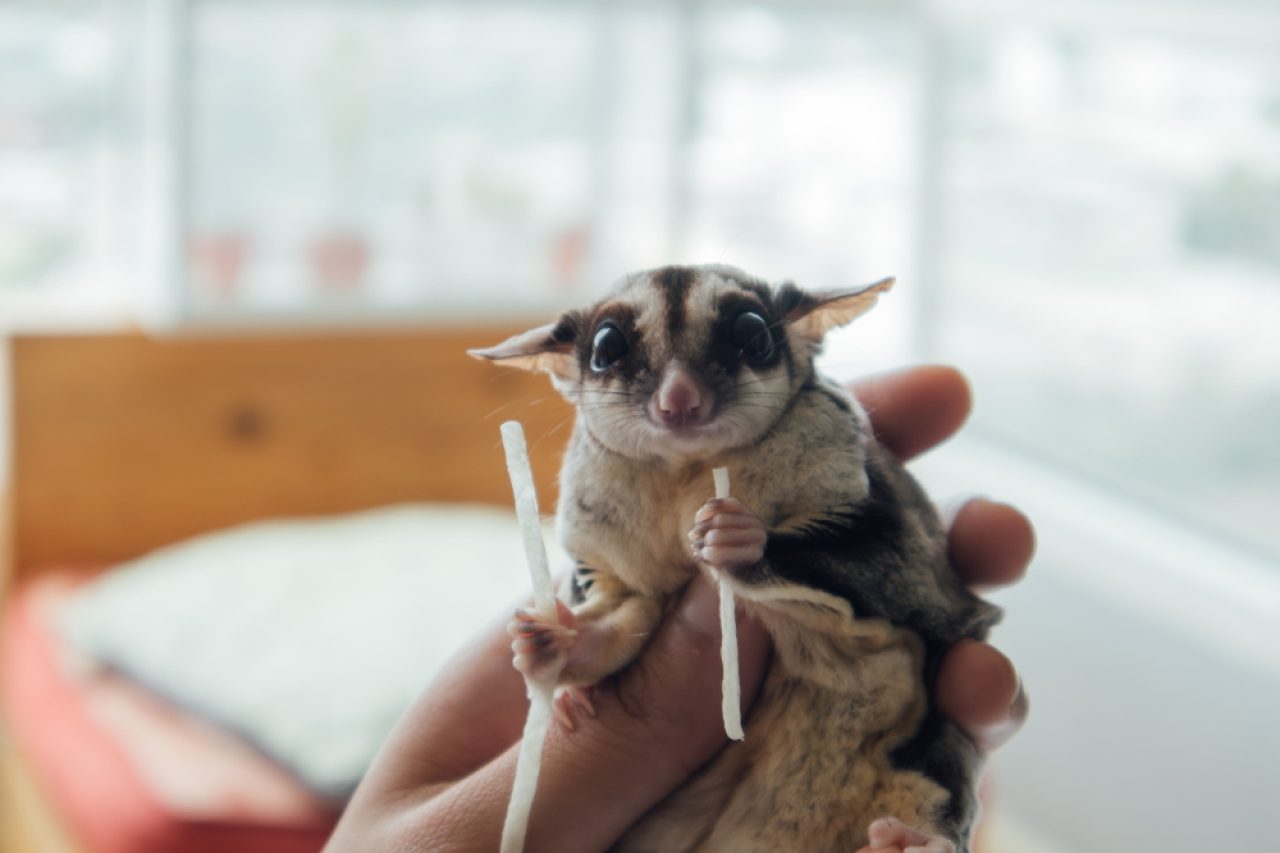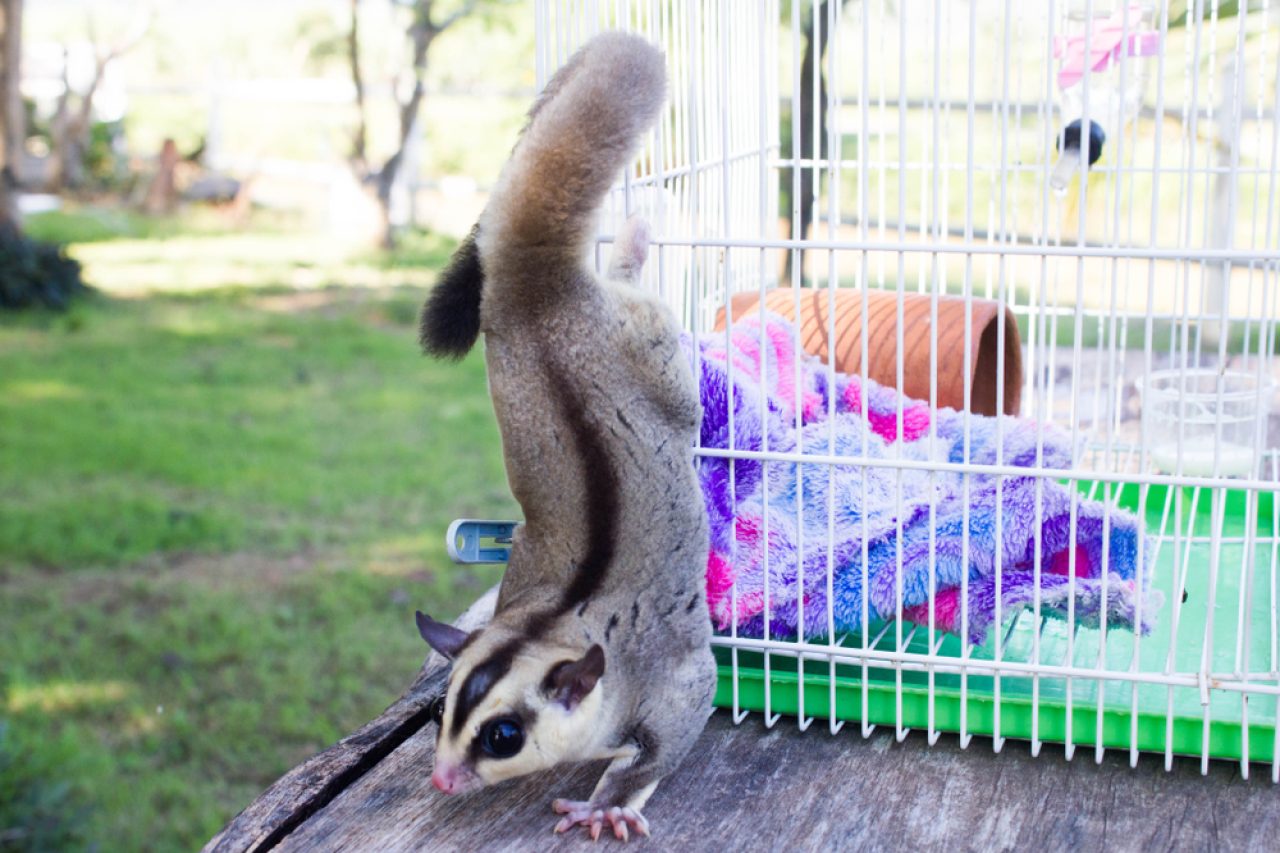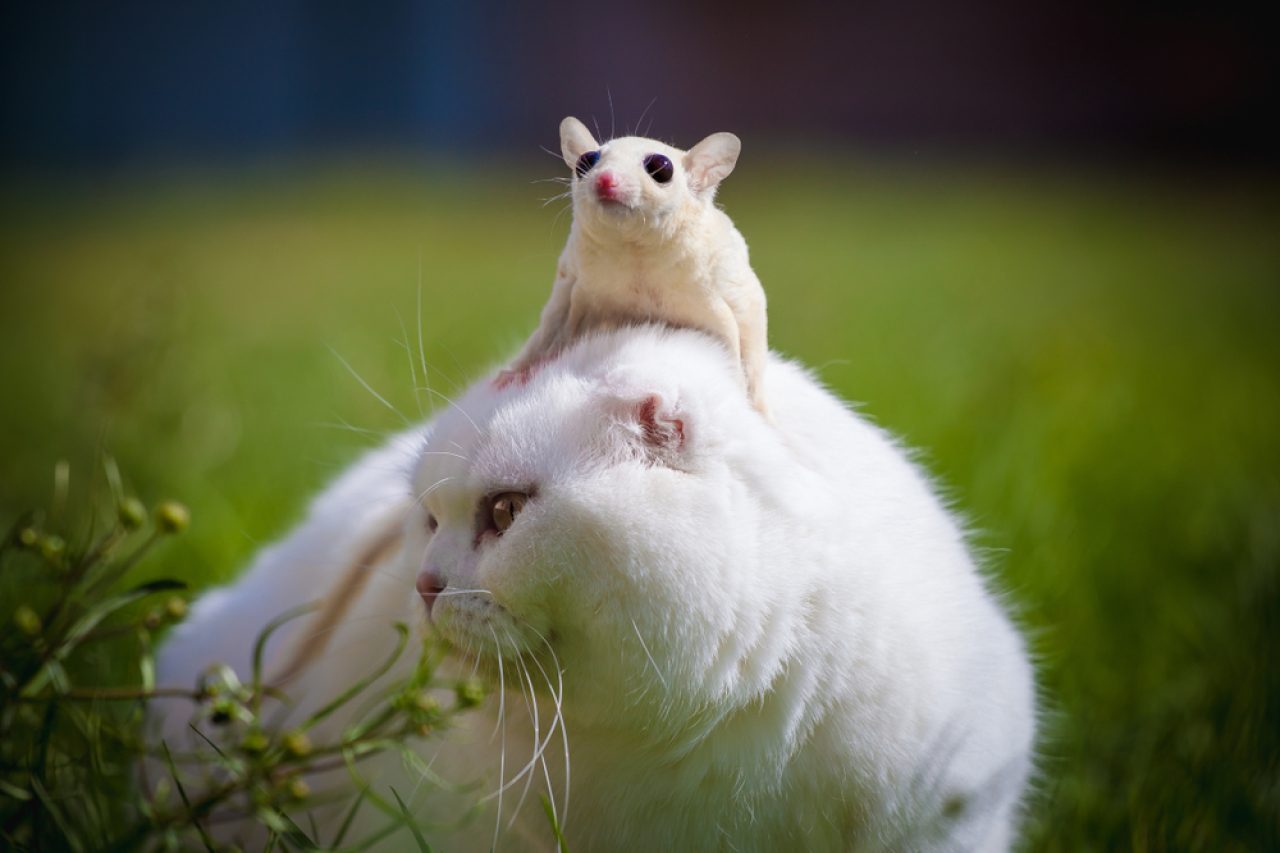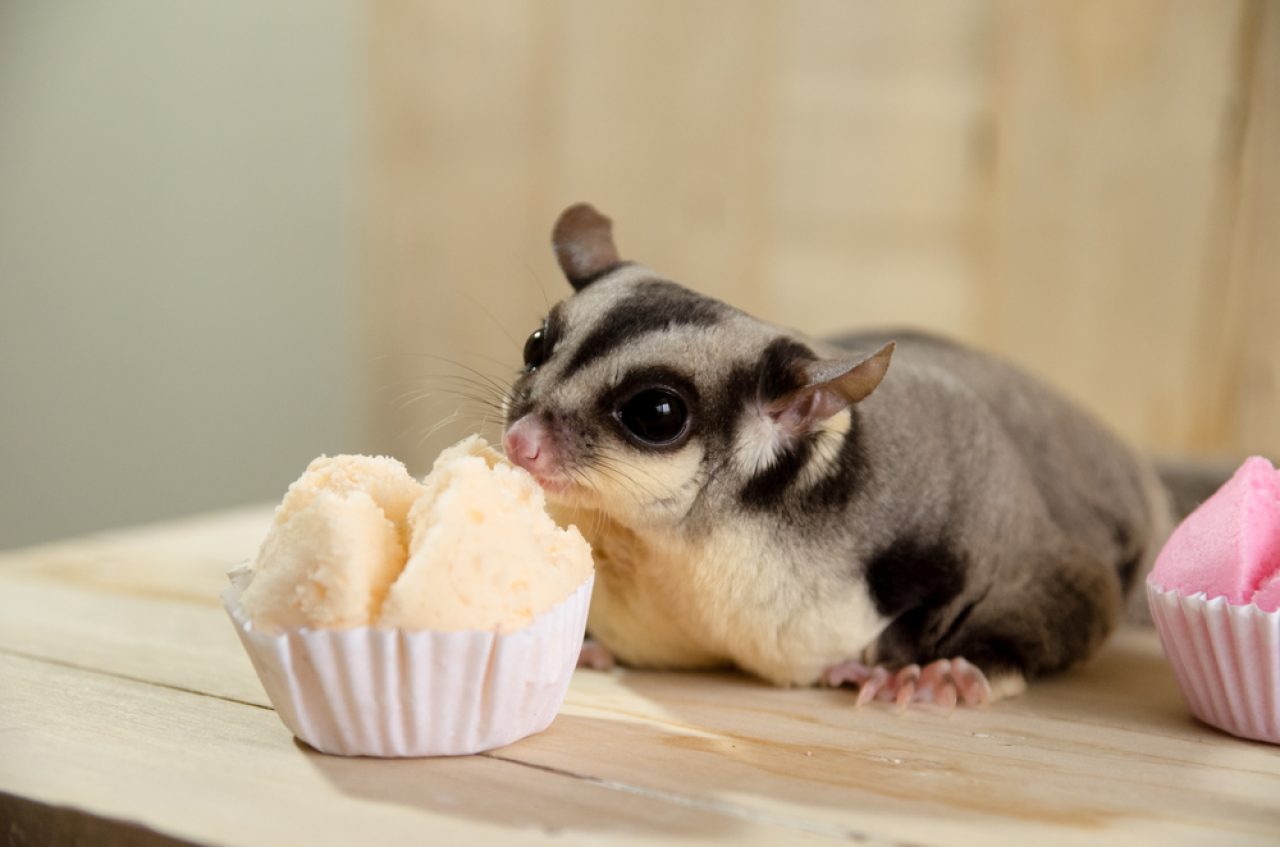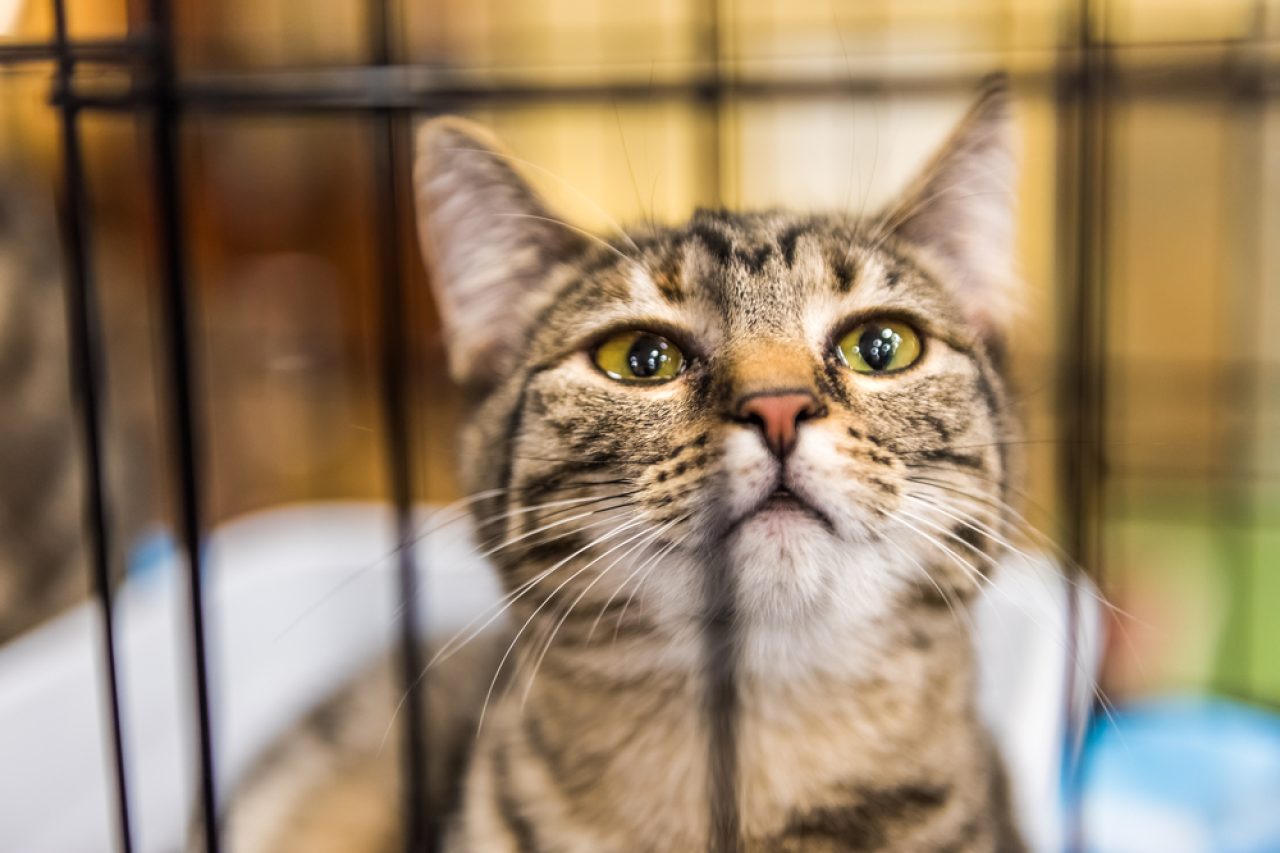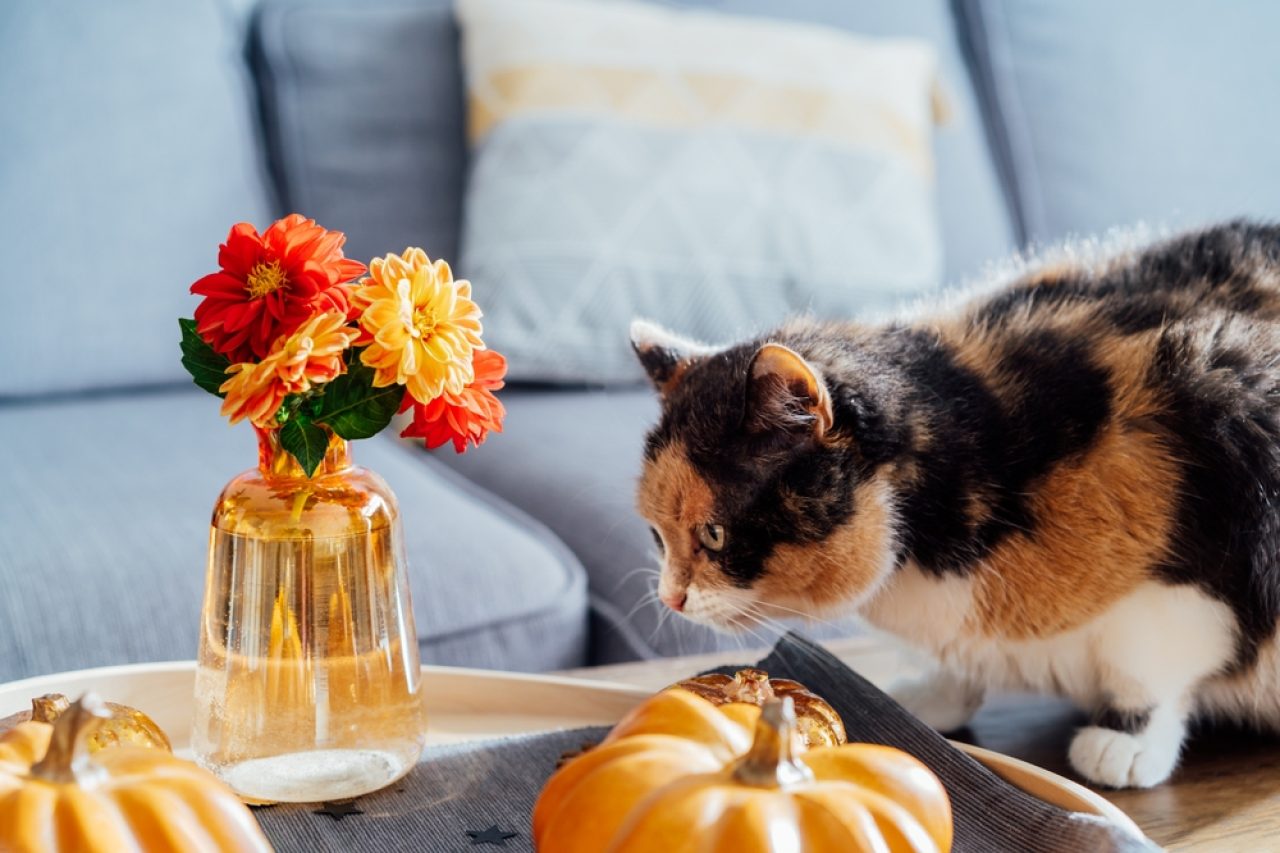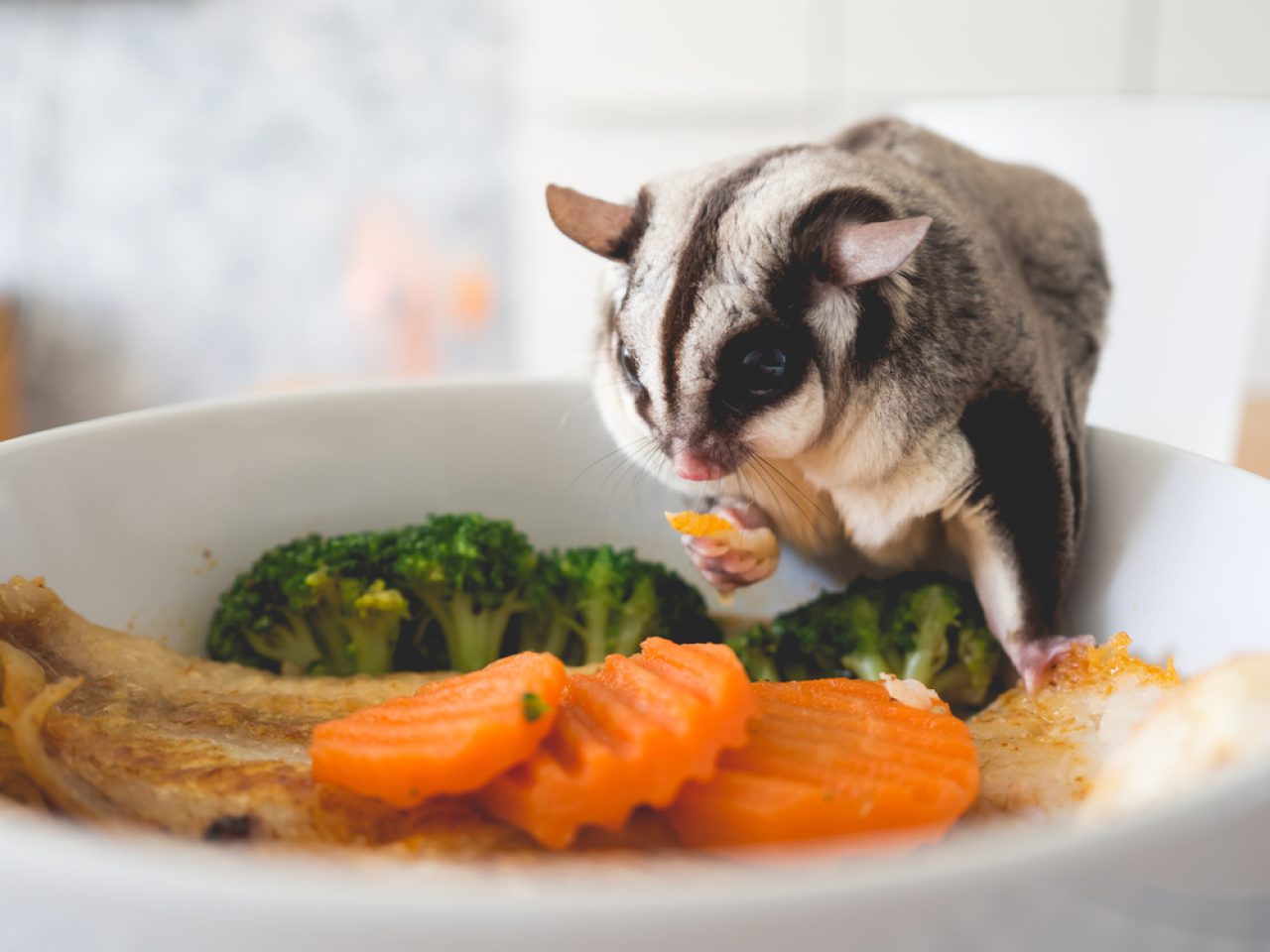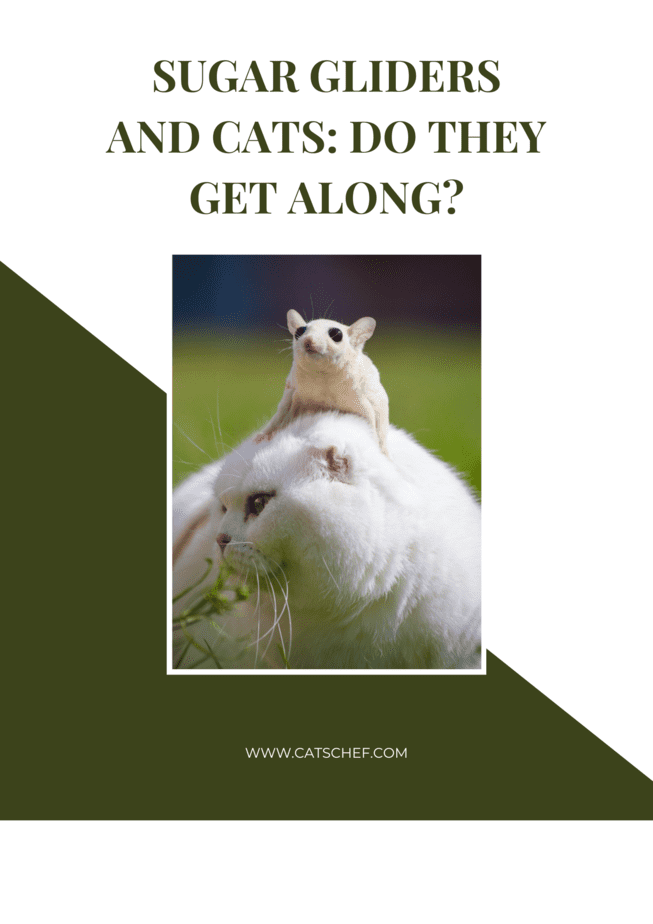📖 Table of Content:
“Hey Alexa, show me everything you can find on sugar gliders and cats!”
Now, that’s a search you never thought you would be making. But, here you are and you’re hoping to learn enough to keep these two energetic creatures from killing each other.
Sure, you started off with kitties and puppies because they were everyone’s pets of choice. And, there wasn’t anything wrong with them – they were adorable, affectionate, and as cuddly as you expected them to be. However, they weren’t strange or mind-blowing enough for your liking.
Hence, you started looking for something that would make everyone sight with exasperation and utter “Wow, what’s that?!”
First, you came across the world’s most popular oddball pet, the Fennec Fox. Of course, these bad boys weren’t available at your local shelter. You would need to pay a lot of money for them.
Not only that, but you’d need to get documents, licenses, and trainers to help you care for something as wild as a freakin’ fox. Second, you crossed paths with a community of people who were obsessed with keeping bugs as pets!
That’s right, cockroaches seem to be a big deal. That is if you’re talking to people who view them more as “adorable crawling creatures”. Meanwhile, most people see them as “pests that make you burn your entire house down to get rid of them.”
But then, then you caught a glimpse of something that looked liked like a flying squirrel. Right there and then, you decided there was nothing you wanted more than to snuggle with a sugar glider. We’re not blaming you, nobody can resist those beady, little eyes.
Therefore, there was nothing left for you to do than conduct your research. Then break your piggy bank and hope that sugar gliders and cats get along – because Mrs. McFluffer ain’t going anywhere.
What are sugar gliders?
We don’t want to simply disappoint you by saying that we’re not that sure about sugar gliders and cats living together. It’s better to brush up on our knowledge of these unique-looking marsupials first. What are sugar gliders? Where do they come from?
While sugar gliders are as sweet as the name suggests, you might get a sugar overload sooner than you might think. Sugar gliders are tree-dwelling marsupials closely related to kangaroos and koalas (rather than rodents).
These animals come from Australia and some parts of Indonesia, but they’re popular around the world. They look like squirrels with creamy grey fluff and dark markings scattered across the back. They also have a gliding membrane. It extends from the front to the back and helps them get from one tree to another.
Sugar gliders are affectionate which means they love cuddling with you, resting on your chest, and even playing with you. They’re great pets, but they’re not appropriate for novice pet parents.
They require training, frequent handling, and plenty of physical activity to keep them happy and healthy. They need a specific, specialized diet and a cage that gives them enough space to do whatever they want.
And, we can’t overlook the fact that sugar gliders aren’t even legal. States such as California, Alaska, and Hawaii have laws that protect sugar gliders from becoming pets.
Additionally, local communities often require permits and licenses to prove that you’re capable of caring for sugar gliders. Other than that, there’s the question of ethics that we can’t brush over.
Some people believe that sugar gliders shouldn’t be pets because they’re animals that love (and need) plenty of space, physical activity, and socialization. These poor little fellas might suffer from stress, anxiety, and depression when they’re locked up and left to tend to their own needs.
How do sugar gliders get on with other pets?
Before moving on to sugar gliders and cats, we can’t help but share the scoop on how sugar gliders get on with other animals. This includes other pets and even other sugar gliders.
These curious creatures are endearing, entertaining, and companionable. Trust me, they won’t spend the day napping when they can climb on things. They will likely glide from one part of the room to the other, and knock a couple of things down.
Actually, they will spend the day napping because they’re nocturnal animals. However, that means that they will do these things while sleeping… Which, obviously, calls for a friend because they can’t have fun when they’re alone. When we say they need a friend, we mean they need another sugar glider.
Here’s the thing, sugar gliders are social and friendly. But, they’re only social and friendly when they’re surrounded by other sugar gliders. Most preferably, it would be one male and at least one female. They’re not great with other animals because they’re likely to hurt one another.
On the contrary to that, sugar gliders need human companionship when you’re trying to bond with them. You’re better off socializing them with humans from an early age rather than trying to get them to play with you or your friend when they’re older.
You need to think of the best way to ensure the two of you get used to each other. Let your sugar glider hang out on your shoulder, in your shirt pocket, or in a pouch hanging around your neck.
Sugar gliders aren’t aggressive, but they might bite you when they feel threatened. And, they might attack other pets when they view them as predators. Therefore, sugar gliders don’t get along with other animals unless they’re socialized from the get-go.
Do sugar gliders and cats get along?
Long story short, sugar gliders don’t get along with cats. We have to underline that before we move on to discuss the pros and cons of keeping sugar gliders and cats together. These energetic critters are always better off hanging out with other sugar gliders.
However, that’s not to say that a household with both sugar gliders and cats as pets wouldn’t be possible. So, unless you’re making sure that your sugar glider and your cat have the same personalities, you might end up dealing with attacks, fights, and wounds nobody wants to deal with.
And, when you do everything you can to prevent that from happening, there’s no reason why these two couldn’t coexist. Sugar gliders are creatures that prefer hanging out with groups.
As you might have guessed, those groups should be other sugar gliders. But, they’re not unaccustomed to surrounding themselves with beasts alike. Sugar gliders and cats can live together as long as they have separate spaces they can go to when they don’t want to play with each other.
Sugar gliders need cages that are reserved for them and have plenty of space for physical activity. But, when they’re out of the cage, they’re better off playing with other gliders rather than playing with a cat.
For example, a cat might attack a sugar glider when she sees one hanging around someone’s neck, moving around the apartment rapidly, and triggering her hunting prowess.
Sugar gliders are very, very small which means they don’t pose any danger to cats. Therefore, a cat that’s affectionate, even-tempered, and gentle won’t feel the need to attack them. As long as a sugar glider doesn’t share a cage with a cat, they’re likely to tolerate each other.
What do you need to know about keeping sugar gliders and cats together?
Sugar gliders and cats can live together when you take the necessary precautions to provide each with everything they need and choose ones whose temperaments match. Other than that, we’re bringing you a couple of guidelines you can follow when you bring your sugar glider home.
1. A good cage can make or break your day
What’s one of the easiest ways to make sure that sugar gliders and cats don’t attack each other? Keep them apart, of course. Cats shouldn’t be caged because they’re better off roaming around the apartment and napping wherever they want to. But, sugar gliders actually don’t mind cages.
We wouldn’t go as far as to say that cages are as good for sugar gliders as traveling from tree to tree outside. However, they’re safer for them. On the off chance that you can support the thought of getting more than one sugar glider for your cage… That would be great!
Though that might sound strange, sugar gliders thrive on hanging out with their own kind inside a large cage. As long as that cage offers them plenty of possibilities.
First off, they’re safe from hurting themselves by falling off of the highest cabinet or getting crushed under something they knock over on themselves. And, they’re safe from getting attacked by your cat or running outside and getting attacked by your neighbor’s dog.
What’s the formula for a happy sugar glider and happy mouser, you might ask?
Keep them apart for most of the time. Make sure they have plenty of space they don’t need to share. Keep your sugar glider caged with other sugar gliders and allow them short bursts of time outside the cage. These things ensure they have enough time to play and not bother or scare each other.
2. Proper introduction and socialization make a world of difference
We would always suggest you don’t even try to socialize your grown sugar glider with your cat. However, we understand that there are times when you “have to.” You’re likely here looking for ways to make that process as pain-free as possible.
Before anything else, make sure you spend a lot of time getting them accustomed to each other. Starting with the proper introduction, keep your sugar glider caged while you allow your cat to enter the room.
She’s probably going to freak out and sniff everyone who’s there up to the time when she notices the little, mouse-looking thing staring at her.
Don’t worry, he’s safe and secure as long as the cat can’t enter the cage. Now, the two of them might scare each other which means that you should try to delegate the situation.
Stay as calm as possible. Observe what’s going on. And, allow them to appreciate each other’s presence before you do anything else. You can repeat the whole “sugar glider in the cage, cat on the loose” thing as many times as needed.
Sooth them when they get anxious and keep some treats under your sleeve for a dash of positive reinforcement. And, before you even know it, these two are going to learn to tolerate each other.
3. Keep an eye (or a nose) on your sugar glider’s scent prior to the introduction
At this point, you should be focusing on getting these two accustomed to the situation rather than getting them to bond with each other. And, one of the things you need to keep an eye on appears to be your sugar glider’s scent.
Hmm, how do we say things without offending anyone? Sugar gliders are cute and cuddly, but they can get pretty stinky when they’re hanging out with other sugar gliders.
And, what’s even worse, they have a unique scent even when they aren’t running around and sweating. That’s the scent that can drive your cat crazy, unfortunately.
Cats have an odd relationship with scents. The moment they notice there’s a pet other than them taking up space, they’re going to mark that pet as a danger.
And, once you try to introduce them, they’re going to recognize the scent and attack the poor thing. But, you can always try to mask the scent with something else.
4. Energetic sugar gliders and equally energetic cats don’t go together
We can’t stress that enough! Spending enough time doing your research and learning everything about a sugar glider’s needs can help greatly. But, failing to observe and understand your cat’s temperament before getting another pet that’s the complete opposite of her can turn your life upside down.
To be straightforward, getting a sugar glider before making sure he can live with you for a long time is fairly irresponsible. Don’t shy away from consulting with your vet or an animal behaviorist. Whether you’re looking to get a sugar glider or a different pet.
Cats can be sugar-glider friendly, though. When you already have a cat that’s gentle and calm, doesn’t have aggressive tendencies, and appreciates the company – you clearly have a green light to get her a little friend that’s going to keep her on her toes.
5. Make sure you’re meeting your sugar glider’s nutritional needs
Why would that have an effect when we’re talking about sugar gliders and cats getting on with each other? Sugar gliders are musty, but they’re even more malodorous when they aren’t eating properly and when they’re experiencing digestive problems.
On the contrary, they’re even more likely to steal your cat’s food and cause her to throw a temper tantrum. Sugar gliders can’t eat the same food as cats, anyway. Hence, the key to having your sugar glider and your cat living harmoniously seems to be proper nutrition. (And separate feeding stations!)
Sugar gliders are the healthiest when they eat plenty of fruit and vegetables, prepackaged insects, nuts, food pellets, and even scrambled eggs and yogurt.
6. Don’t shy away from bonding your sugar glider with your cat
Alright, you’ve done everything you can to ensure both your sugar glider and your cat have everything they need. Now you can even start thinking of ways how to get them to like each other. While that’s not a common case, sugar gliders and cats can grow to appreciate each other’s company.
First and foremost, wait a couple of days for your glider to settle down and get used to the place. When you notice he’s getting more comfortable, make sure the two of you are bonding.
We suggest cuddling, carrying your glider on your shoulders, and playing with toys. When both of you feel better about each other, you can bring your cat and check what happens.
After that, there’s nothing stopping you from exploring a sea of possibilities when we’re talking about bonding between the two. Have them play with each other every now and then. Offer them treats as positive reinforcement. And, give them space to rest when they’re overwhelmed.
Sugar gliders and cats can be friends, as long as you take the proper precautions.
